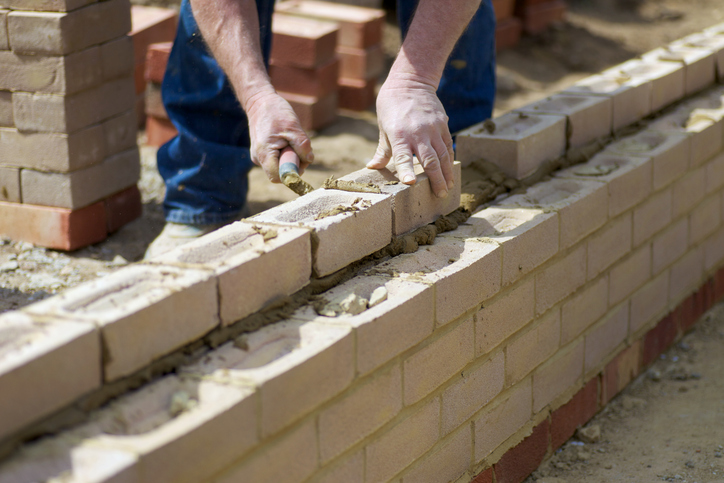Significant structural damage can be caused to homes built on poor foundations. These foundations begin with the type of soil the footings are laid on. Ground movement is caused by significant changes in moisture content. Clay soils, in particular, can swell or shrink with moisture changes and settlement can occur due to compressed soil or fill.

The compromised footings can occur at any time before, during or after construction of a building. Soil classification and footings are listed in the Australian Standard AS 2870/2011 – Residential slabs and footings.
What Does the Standard Cover?
The Standard is written for a single dwellings or town-house which are detached or joined by only a common or party wall. Industrial and commercial buildings may also fall under the Standard if they are of a similar size and loading to a house. The life of the structure is considered to be 50 years.
Soil Conditions Causing Damage
Building damage can occur if the soil moisture content of foundation material is not properly managed before, during and even after construction. In the case of reactive soils, drainage and soil moisture around the building need to be managed ongoing to reduce the risks of damage.
Abnormal soil conditions before construction can occur when:
- An existing building is removed
- Trees are removed
- Trees remain on the building site or nearby
- Drain, pond, swimming pool, channels, effluent disposal areas which are maintained or withdrawn from site.
Abnormal soil conditions can occur during construction due to:
- Not providing adequate drainage on site
- Drainage not constructed adequately
After construction abnormal moisture conditions can develop due to:
- Trees being too close to a footing
- Lack of maintenance of site drainage
- A plumbing leak
- Vegetation removed from around building
- Excessive or irregular watering of grounds near building
- Outflow pipes from air conditioners and hot water systems
Soil Reactivity
‘Reactive soil’ is the way soil reacts with changing moisture content. Soils are classified on reactivity.
Class A - site made up mostly of sand and rock with little or no ground movement with moisture changes
Class S – site has slightly reactive clay that may experience some slight ground movement with a change in moisture levels
Class M – site is moderately reactive clay or silt with moderate ground movement from moisture changes
Class H1 – site has highly reactive clay which may experience high ground movement from moisture changes
Class H2 - site has highly reactive clay which may experience very high ground movement from moisture changes
Class E - site is extremely reactive which may experience extreme ground movement from moisture changes
Class P – soft or unstable sites due to soft clay, silt or loose sand, collapsing and eroded soils and sites that cannot be classified.
A large number of sites in Australia are classified as P and require the services of a structural engineer.
How Classification Impacts on Construction
Once soil classification has been completed, a structural engineer can decide on the type of footing system needed for the ‘normal wet’ or ‘normal dry’ conditions. The depth, reinforcement and spacing of edge and internal beams may be determined. The type of construction and soil classification will determine the measurements.
Footing system options include:
- Slab
- Stiffened rafts
- Waffle rafts
- Strip footings
- Piled footings
- Pad footings
Construction types listed in the Standard include:
- Clad frame
- Articulated masonry veneer
- Masonry veneer
- Articulate full masonry
- Full masonry
If you require a soil classification report for your local council, contact the experienced team on (08) 9382 8888 or contact us online.
Advanced Building Engineers also performs a range of other geotechnical building requirements including land capability assessments, clay base certifications, fill assessments, internal thickening layout inspections and laboratory soil testing and analysis.